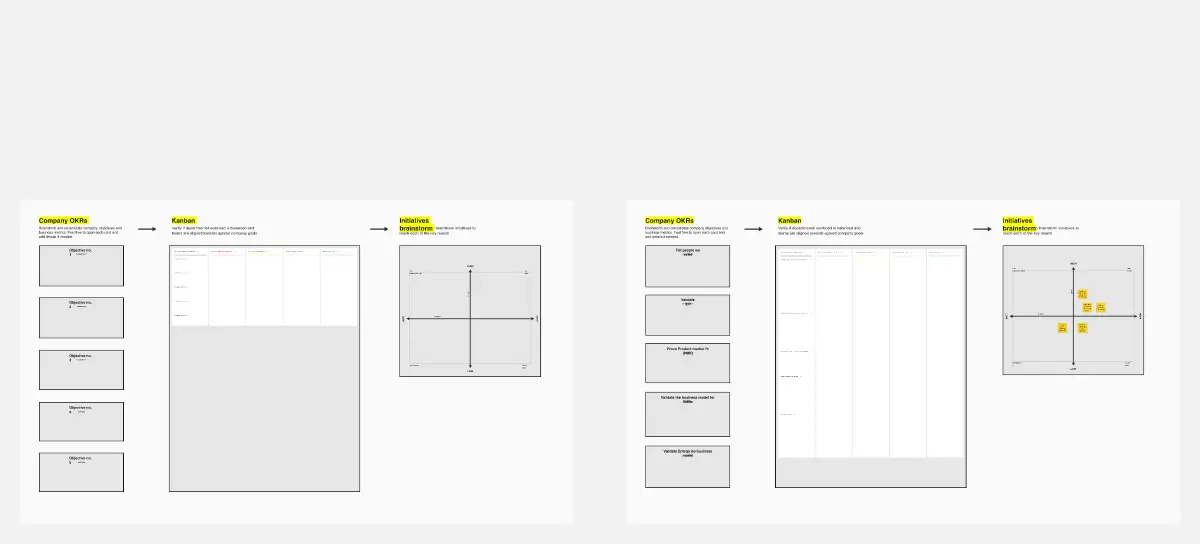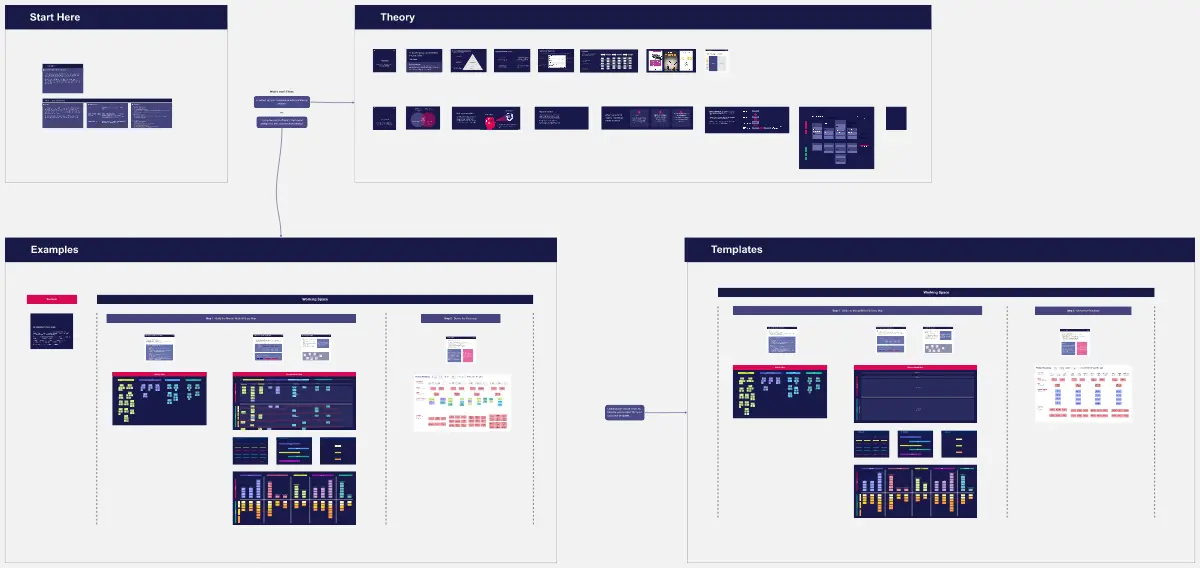GTM Value Prop Canvas
The value proposition canvas for GTM (go-to-market) companies is a take on the classical Value proposition canvas by Dr Alexander Osterwalder with a twist.
We are putting your ICP (Inicial Customer Profile) at the core and at the beginning of the canvas because we do not have the product fully developed yet or we can change it.
Put the Customer First ❤️✌️
By doing this, we encourage and force you to really start from the persona and their problems instead of focusing accidentally on features and solutions no one needs.
Moreover, for those who are comfortable with the Design Thinking Process, we included the parallels between the process and the canvas.
Who can benefit from this template?
The canvas is ideally used in a team of people, where one person is neutral and guides the process (the facilitator) and the rest provide ideas and insights.
Facilitator’s role is also to challenge and reevaluate ideas between “pains” and “gains”, as sometimes answers and ideas can be tricky to position.
When should you use this template?
Template is most useful if you are thinking about creating or improving your product or service, and you want to make sure you are listening to the Voice of the customer, and you want to be sure your solution answers customers' problems. It is proven that when customers have a say in the product, products are better and more successful as they solve real-world problems.
While you can work with assumptions about your customers, it is best to run a couple of customer interviews and then fill the canvas with their views. This way you ensure that answers and solutions provide real value to your customers.
Step-by-step instructions and tips for using this template
1. Pick your ideal customer.
Everyone in the room has to think about this one persona or target group. If needed, add additional details to the customer for everyone to agree on how the customer thinks and feels.
2. Write down what the customer is trying to achieve.
Jobs to be done is a great tool to help you do that.
3. Consider pains and gains.
Then think or write about what bothers the customer and prevents them from doing their “jobs” (pains), and what would be nice to have, what would elevate the experience for the customer (gains).
4. Map assumptions.
Use assumptions or actual answers, but ideally, you will validate your assumptions before proceeding.
5. Empathize
5a) Brainstorm or brain write solutions to each pain (pain relievers). Each pain should have at least one pain reliever. It is possible to use one pain reliever as an answer to multiple pains, but at this stage try to be more creative than that. A good pain reliever is a feature, not a product.
5b) Do the same for the gain creators.
6. Connect the dots.
Now is the time to see which pain relievers and gain creators make your product or service stand out. If one solution covers multiple pains and gains, they certainly are a good candidate to move forward with. This way you’ll populate the “Selected pain relievers” and “Selected gain creators” section
Tip: this step is essential for your brainstorming to go wild, but to keep focus on the most important things in your MVP because everyone’s resources are limited.
7. Apply
From the selected features, namely selected Gain creators and Pain relievers, plan for the MVP product, or bigger product features (e.g. screen in the app, service).
8. Test
It is time to go out in the wild and test your solutions.
Categories
Similar templates





